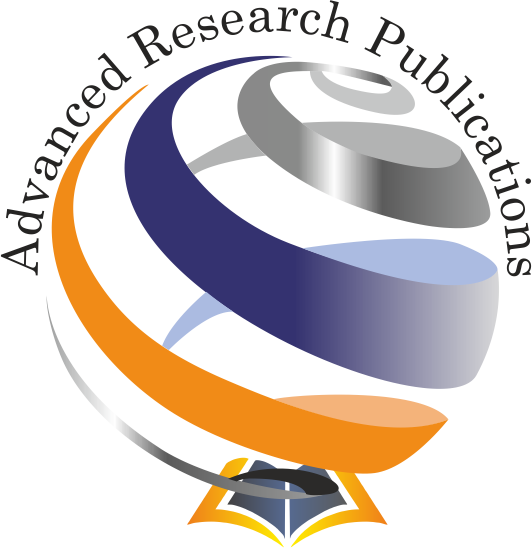Guidelines For Authors
The following are the uniform requirements for manuscripts submitted to the Chettinad Health City Medical Journal, which are in accordance with the Uniform requirements for Manuscripts submitted to the Biomedical Journal developed by the International Committee of Medical Journal Editors (October 2001).
Please find the link for submission of articles to Chettinad Health City Medical Journal mentioned below: http://medical.advancedresearchpublications.com/index.php/CHCMJ/user/register
This is an online manuscript processing system which allows submissions and tracking of the decision and its progress till print proof stage. The authors (new users) need to register first and then can submit the article. The already registered users can just login and submit their articles.
For any query please contact: editor@care.edu.in
The Editorial Process
The submitted manuscripts are taken up for review for possible publication assuming that they have not been simultaneously submitted or already accepted or published elsewhere. The initial review is conducted by the Editors. Manuscripts lacking significant originality and important messages and those with serious flaws are rejected. The selected manuscripts are sent to one or more experts in the field for review and they are blinded for the identity of the contributors. The reviewer’s comments and acceptance or rejection of the manuscript will be informed to the contributors in 3 to 4 months. The accepted articles will be copy-edited for format, spelling, grammar, punctuation, etc.
Types of Manuscripts and Word Limits
Original articles: This includes case series, randomised control trials, interventional studies, studies involving screening and diagnostic procedures, studies of outcome analysis, studies involving cost-effective analysis and surveys with high response rates. The word limit is 2500 excluding references and abstract.
Review articles: This includes a systematic critical assessment of literature and other data sources. The word limit is 3000 excluding references and abstract.
Case reports: This includes a report of new cases, very rare cases and very interesting cases. There should not be just reporting of cases, but their clinical significance or implications should be emphasized. The word limit is 1000 excluding references and abstract; with up to 10 references.
Letter to the Editor: This includes short decisive observations, including brief reporting of rare and interesting cases. The word limit is 400 with up to 4 references.
Other Sections: Include Editorials, Perspective articles, History articles, and Classroom articles, which are by invitation from the Chief Editor.
Limits for the number of images and tables: The number of tables and figures is limited to one per 500 words for all categories of manuscripts.
The templates for all types of manuscripts are available on the Journal’s website and authors are requested to use them.
Authorship Criteria
Authorship should be based on substantial contributions to:- Concept and design or data acquisition or data analysis and data interpretation;
- Preparation of manuscript, critical revision and contribution to the intellectual content;
- Final approval of the manuscript version to be published.
Mere fund acquisition for the study or data collection or general supervision of the research project does not qualify for authorship.
All the authors must have contributed substantially to the work and must be able to take responsibility for the respective portions of their contributions. The authors should be named in the order of their relative contribution towards the study or the manuscript writing. This order cannot be changed after submission of the manuscript without the written consent from all the authors.
Number of Authors
- Original papers: Maximum of six from a single institution
- Case reports and review articles: Maximum of four
- Letter to the editor: Maximum of three
There must be a written justification if the number of authors exceeds these limits.
Sending the Manuscript to the Journal
The cover letter must include the undertaking that the manuscript has not been simultaneously submitted/ accepted/ published elsewhere. Conflict of interest, if any, in the form of financial or other relationships should also be disclosed. Copies of any permission to reproduce already published material including illustrations or photographs and consent for publication of identifiable material should be sent along with the manuscript.
Please find the link for submission of articles to Chettinad Health City Medical Journal mentioned below: http://medical.advancedresearchpublications.com/index.php/CHCMJ/user/register
Contact Details of the Chief Editor
Dr. D. Raja,
Editor-in-Chief,
Professor,
Dept. of Community Medicine, CHRI.
Email: editor@care.edu.in
Preparation of the Manuscript
Font style and size: Times New Roman Size 12 for the text and 14 for the titles.
Double spacing without justifying. The language and spelling style should be British English.
Pages should be numbered serially starting from the Title Page.
Title Page
It should contain the following:
- Title of the article (which should be short, relevant to the manuscript and informative)
- Type of the article (Original paper/ review article/ case report, etc.)
- Running title (short title) with less than 50 characters
- Names of authors (name followed by initials/ last name, first name and initials of middle name) with the highest academic degree. Prefixes like Dr, Prof, etc. are avoided.
- The name of the department(s) and institution(s) where the work has been carried out.
- Corresponding author’s name, address, phone number, e-mail address and Orcid id.
- Total number of pages, tables, photographs and word count for the text (excluding abstract and references).
- Sources of support/ grant/ equipment support, etc., if any.
- If already presented in a conference/ meeting, name of the conference/ meeting, place and date of presentation.
Abstract Page
- This should carry the full title of the manuscript and abstract.
- The word limit for the abstract is 250.
- The abstract is structured with an introduction and aim, methods and materials, results and conclusions, in case of research articles. For the other types of articles, the abstract is unstructured.
- 3 to 10 keywords should be provided below the abstract.
Manuscript Pages
Introduction
This should state the purpose of the study/ article and the basis and rationale for the study.
Methods
- This should state the nature of the study (observational/ experimental/ trial, etc., whether prospective/ retrospective).
- Selection of the subjects (patient/ experimental animals) including controls.
- Details of the methods, apparatus (with the manufacturer’s name and address) and procedures.
- References should be quoted for established methods including statistical methods.
- New or less known methods should be described in detail with the rationale and limitations.
- Generic names of drugs and chemicals used, including dose, and route of administration should be stated.
- Randomized control trials should give the details of the protocol, methods of randomization, concealment of allocation to the treatment group and the method of blinding/ masking as per the CONSORT statement (Moher D, Schulz KF, Altman DG: The CONSORT Statement: Revised Recommendations for Improving the Quality of Reports of Parallel-Group. Randomized Trials. Ann Intern Med. 2001;134:657-62, also available at http://www.consort-statement.org).
- Reports of human studies should state that the procedures are in accordance with the ethical standards of the responsible Institutional/ Regional Ethical Committee on Human Studies and with the Helsinki Declaration, 1975 revised in 2000 (http://www.wma.net/e/policy/17-c_e.html). Patient’s identity including name, initials, hospital number, etc. should not be disclosed.
- Reports involving animal experimentation shall state the approval from the Institutional Ethical Committee and adherence to the national law on the care and use of laboratory animals.
- Statistical methods used should be stated in detail.
Results
- The results should be shown in sequence in the form of text, tables/ illustrations, wherever required.
- The data shown in the tables should not be repeated in the text.
- Only important observations should be summarized/ emphasized.
Discussion
- New and important aspects of the study, the conclusions drawn from them and the implications for future research are stated.
- There shall not be any repetition of the statements and data from the introduction and results section.
- The observations and conclusions of this study are compared and related to the other similar or relevant studies.
- False and unsubstantiated claims on cost or economic benefits shall be avoided.
- New hypotheses drawn from the study shall be stated and labeled as such, if required .
Acknowledgements
- This should be mentioned before references.
- This may include general support from faculty that needs acknowledging, not amounting to authorship, technical help, financial and material support with the actual nature of support.
References
- Numbering is done consecutively in the text (not in alphabetical order).
- The references are identified in the text, tables and legends by Arabic numerals in superscript.
- The titles of the journals shall be mentioned in the abbreviated form as per the style used in the Index Medicus. The complete name of the journal is stated for non-indexed journals.
- Abstracts shall not be used as references.
- Commonly cited types of references are shown below:
Standard journal article: Huie MJ, Casazza GA, Horning MA, Brooks GA. Smoking increases conversion of lactate to glucose during submaximal exercise. J Appl Physiol. 1996;80(5):1554-9. [PubMed] [Google Scholar]
Chapter in a book: Phillips SJ, Whisnant JP. Hypertension and stroke. In: Laragh JH, Brenner BM, editors. Hypertension: pathophysiology, diagnosis, and management. 2nd ed. New York: Raven Press; 1995. p. 465-78.
Tables
- Tables shall be self-explanatory and shall not be repeated in text.
- Tables shall have not more than 10 columns and 25 rows.
- Tabled are numbered in Arabic numerals consecutively in their order of citation in the text.
- A brief title is given for each table.
- Abbreviations used in the table shall be explained in the footnotes.
- Tables borrowed, adapted or modified from other sources shall be duly acknowledged after due permission.
Illustrations (Figures)
- The most suitable format is jpeg, though the other formats (tiff, gif) are also acceptable.
- For already published figures, due permission shall be obtained and the same shall be acknowledged in the manuscript. Legends for Illustrations – Figures are numbered in Arabic numerals and legends typed with double spacing with a word limit of 40.
- When symbols, arrows or letters are used to identify parts of the illustrations, each one is explained in the legend.
- The internal scale, magnification and the method of staining are mentioned in photomicrographs.
- The tables and charts are provided at the appropriate place in the text and not at the end of the manuscript.
Protection of Patient’s Rights to Privacy
Identifying information shall not be published in written descriptions, photographs, CT scans, etc., and pedigrees; if the information is essential for scientific purposes, written informed consent is required from the patient or guardian. Informed consent for this purpose requires that the patient be shown the manuscript to be published. When informed consent has been obtained, it should be indicated in the article and a copy of the consent should be submitted with the cover letter.
Publication Charges
Article publication charges are INR 3000 (USD 120), which are to be paid after a formal acceptance of the article is received by the author.
Reprints
Reprints are not provided by the Journal.
Copyrights
The Editorial Board has the copyright of the literary content of the Journal. However, all users are permitted free access to and license to copy and use the work for non-commercial purposes with proper acknowledgment of the authorship and ownership rights.
The format of the cover letter, contributor’s form, and templates for various types of manuscripts are available on the website and the authors are requested to download and use the same.
Useful Links

Published by
Advanced Research Publications
under the license terms of
Creative Commons Attribution-NonCommercial 4.0 International License.


